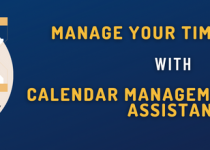10May 23 Innovative Ways To Improve Website Navigation & User Experience

Website navigation is a vital factor that determines the visitor’s experience. Navigating a website without a proper and well-defined structure is similar to running through a maze with no map or reference. You do not want to put your audience in a “Maze Runner” situation. Website Navigation directly affects user experience (UX). You will lose significant traffic if your visitors get frustrated and overwhelmed due to a complex website structure.
Your site must have a structured navigation menu bar to help visitors locate the content they are searching for. If the navigation menu bar is missing or improperly designed, visitors will simply find an alternative site in the future. This will eventually end in a higher bounce rate and negatively impact your rankings on search engines. So, how to improve your website navigation?
What Is Website Navigation Menu Bar?
Get a brief idea regarding the menu bar of your website before you improve your website navigation. The navigation menu bar on your website contains all the crucial links. These links direct your readers to specific landing pages of the website. The internal web pages’ links are organized on the menu bar to help visitors understand the number of pages present on your website. Some of the most common pages linked to the menu are:
- Home
- About Us
- Services/Products
- Plans/Pricing
- Blog
- Contact Us
It is imperative to note that the menu bar on the website may contain links to other external pages apart from internal ones. You can consult this with an expert providing website design services.
What Is Website Navigation Structure?
The menu of a website contains links to internal pages. Now, let’s shift focus to the website navigation structure. The website user experience is highly dependent on this factor. Certain web pages are accessible only through other mediums. You can recognize these as subcategories under a specific service/product. For instance, if you have a Mission and Team section on your site, the internal links must be categorically hyperlinked to About Us (which is shown in the menu bar).
Types of Website Navigation Structures
Learning about the web navigation structures will allow you to plan your design accordingly and ultimately deliver the best user experience to your visitors. It is not mandatory to devise a plan revolving around these general options. Nevertheless, these ideas will help you in the future.
Horizontal Navigation Bar
Are you wondering how to improve user experience? Think of planning your website navigation structure to the most common type – the horizontal bar. The primary links are displayed horizontally on the menu bar. These direct your visitors to the respective page through interlinking.
Dropdown Navigation Menu
Dropdown navigation menus keep your products and webpage content organized. The primary link is displayed on the top level of the navigation bar. When a user clicks or hovers on the main category, the menu expands to show the subcategories. You may include several dropdown menus as per the requirement. This type of navigation is good for sites that are content-rich and provide users with plenty of links to find specific information or product. This is a great way to boost website user experience.
Hamburger Navigation Menu
This type of navigation menu is usually required for mobile sites and applications. However, these are sometimes used in websites too. In this structure, the top-level menu or the header is hidden behind a single button. When a user taps the button, the menu gets revealed through animation.
Vertical Sidebar Navigation Menu
A vertical sidebar menu contains all the links stacked on top of one another. The navigation menu is positioned either at the left or right of the homepage. This structure applies to sites that have numerous primary links. Showing them all horizontally on the menu bar may not be feasible. Sidebar navigation can also be designed for internal pages. If you don’t know how to design a web page, consider discussing your plans with a professional website designer.
Footer Navigation Bar
A footer navigation bar is similar to the header menu that is designed to promote “catch-all spots.” It contains the most important or additional page links of a site. For instance – blogs, contact us, privacy policies, disclaimers, etc. These are shared in the footer so that the links don’t cram up the header. Also, it’s a good way to categorize the options if required for a user.
Now that you have learned about the navigation menu and structure planning, let’s dive in to discover some innovative website navigation tips to boost user experience.
Reduce Top-Level Navigation Links
If your website has a lot of pages, make sure to show only the important ones in the header. This is a very important point for e-commerce stores. How many items should be in your menu bar? Discuss and plan with a professional team that provides excellent web design. Set up a primary navigation bar and as a rule of thumb, include 3 to 5 main links in the header. This is because; fewer items on the navigation bar are good for search engine optimization. As per Google, a homepage must have the maximum authority. This means the authority gets divided when you include too much of links in the header. Minimizing the number of links will allow your internal pages to score better authority as Google crawls them as individual pages. Therefore, the chances of ranking automatically heighten.
Strategically Choose The Order Of Your Menu Items
Do you know about the serial position effect? As per human psychology, our mind tends to recall the first and last part of a list. In rare cases, the middle part is sometimes remembered. This can be an advantage when you look to improve website navigation. Include the most important links at the start and end of your page. This will help you to drive visitors to the significant pages of your site.
Optimize Mobile Website Navigation
Having a responsive web design is pivotal to this day. Therefore, optimize the menu of your mobile website. Consumers expect the same desktop user experience when they visit your site through a mobile device. Having a responsive and optimized navigation bar guarantee improvement in the mobile conversion rate. If your mobile menu lacks hierarchy, the visitors will simply get lost in the middle. Without proper guidance and direction, users can suffer indecision. Separate shopping-related links from other informational pages through proper navigation. This ensures directional guidance and a seamless experience for visitors.
Design A Sitemap To Prevent User Experience Issues
A sitemap forms the skeleton of your website navigation structure. A sitemap is responsible to display the hierarchy of the internal pages of a website. Designing a sitemap is a computational process. Once the designing team completes the initial version, make sure to reduce the number of hierarchy levels. Categorize your pages smartly and remember, visitors must be able to land on your deepest internal page within three clicks. If you cannot exclude the number of pages from your site, try designing a footer navigation bar for your website.
Replace Drop-Down Menus
If the drop-down menu on your website is complex, extensive, or unfamiliar, it’s better to replace it. Include a detailed paged with proper website content. Several kinds of research on usability show drop-down menus can be annoying. Also, website owners need to sacrifice valuable information only so that they fit in appropriately. Some reputable brands have used this strategy to drive customers through their support menu.
Apple has used this strategy to help customers navigate their support menu. Rather than cramming all of the support options into a drop-down menu, they opted to create an entire page that has each product category they offer. The accompanying visuals make finding the right option a simple task.
Bottomline
Good user experience can be gained with website page speed. Website page speed automatically improves when the navigation structure is properly planned. There are different types of design trends available. Choose one that applies to your site and works with your features. Follow the best practices and offer an unmatched navigation experience to your visitors.
If you’re finding it hard to improve your website navigation and user experience, let UsePerWish know the problems. Our team of experts can analyze your site and deliver the best solutions.
Related Posts

All You Need To Know About Outsourcing Digital Marketing

Manage Your Time Better with Calendar Management Virtual Assistant
